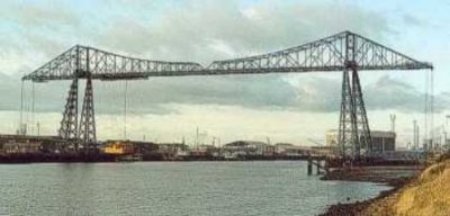New 02 March 2010

TEESSHIPS
VLISSINGEN
(FLUSHING) 2009
INTRODUCTION
Well, a whole seven months have flown by since Anne and I enjoyed our 2009 summer holiday at Vlissingen, more familiarly known in the UK as Flushing, in The Netherlands - or Holland - whichever you prefer. We had a great time and learned quite a lot of new things!
Like ....
.... the Dutch
police are very quick to pounce if you park on double yellow lines! We were in
the process of booking in when the Hotel Truida owner Monique came up to us
saying "Mr Mapplebeck, come quick, the police do not believe you have just
arrived". Anyway, soon sorted out through the availability of a suitable
parking permit and we were OK for the rest of our stay. Of course, after we'd
been back home for a while my friend, Mick Green, told me that the large
car-park at the top of the bank at the rear of the Truida was free parking - for
some reason I'd assumed we had to pay for parking
there!
.... marine radio waves can play havoc with modern car electronics and keys. We didn't want to use the car until two days later and had a mild panic when there was no response to repeated activations of the car key. Anyway, did eventually get the click and could drive off. When this scenario repeated itself for a couple more days I thought the key battery must be going flat and we'd better get a new one. One morning we quite easily found the Nissan dealership in Goes a few miles out of Vlissingen and asked to have the battery changed. The chap on the desk asked where we were staying and once he knew we were on the Boulevard in Vlissingen told us that we were most likely being affected by the marine band radio waves - the pilot station being quite close. He also showed us how we could open the car using the key manually in an emergency, something I had not worked out (read the booklet!!!) in the eleven months we had had this car!
.... the hotel fire alarm works! We were awoken one morning at 2.00am by a sound in our room and realisation hit that it was the fire alarm. All residents dutifully trooped out down the stairs and out the back of the hotel. Thankfully, a nice mild night with some people in various stages of dress/undress. Ab, the hotel co-owner drove up, checked the premises, and announced which room had triggered the alarm, coupled with the pleasing fact there was no actual fire! The occupant of the room concerned confessed he had been taking a shower, obviously a very hot one, at the time!
.... over at Terneuzen we encountered a loveliness of ladybirds on two days at different spots. These insects may look lovely, but they are a nuisance when they congregate en masse. Apparently, these also appeared at various spots around the UK around the same time. However, we did not get them so thick as some friends of mine endured at the same time up at Cuxhaven!
.... this was my first intensive use of my new digital camera, so a time of experimentation, some good, some bad. On the plus side I found that I could take many of the ships in the outer channel passing Vlissingen quite successfully at around 10-20 times magnification (a vast improvement on the maximum half-frame shots (x4) available previously with a 200mm zoom lens!). I even managed one shot of a small tug at the maximum possible magnification of 115 times - although to find and hold position on it was somewhat like finding a needle in a haystack! Another big plus was that I could use the camara zoom to take a close up of ship bows to find out the name. On the down side, I found when editing my shots, that I took too many in unsuitable conditions, particularly into the sun which beamed down into our eyes for most of each day on the Vlissingen side. By contrast, sunny side up at Terneuzen was great!
.... it takes a long time of part-time activity to research 400 ship sightings, and to edit 1000 digital photos! I had looked up the ship details using Equasis (before they changed their format) and Miramar in about a month, and went through again for any changes up to January. Editing of the images then progressed (beyond the few you have already seen!). Although I had been absolutely delighted with the results produced previously with my current photo editor I initially proceeded by making manual adjustments to contrast, etc. I was almost half way through before I started experimenting more with the auto enhance facility. Some results were fantastic, particularly for black-hulled vessels, but others were somewhat surreal, and still then needed further manual adjustment to look right. This feature did a good job of cutting through the haze which I had not realised hung over the shipping channel at various times. Of course, even the sharpest sharpening could do nothing much about the small number of views that sufferred from camera shake!
.... it also takes some time to prepare web pages! But I am now about to start moving forwards, hopefully, before we start our next ship-spotting holiday!!!!!!!
ENJOY!
**********